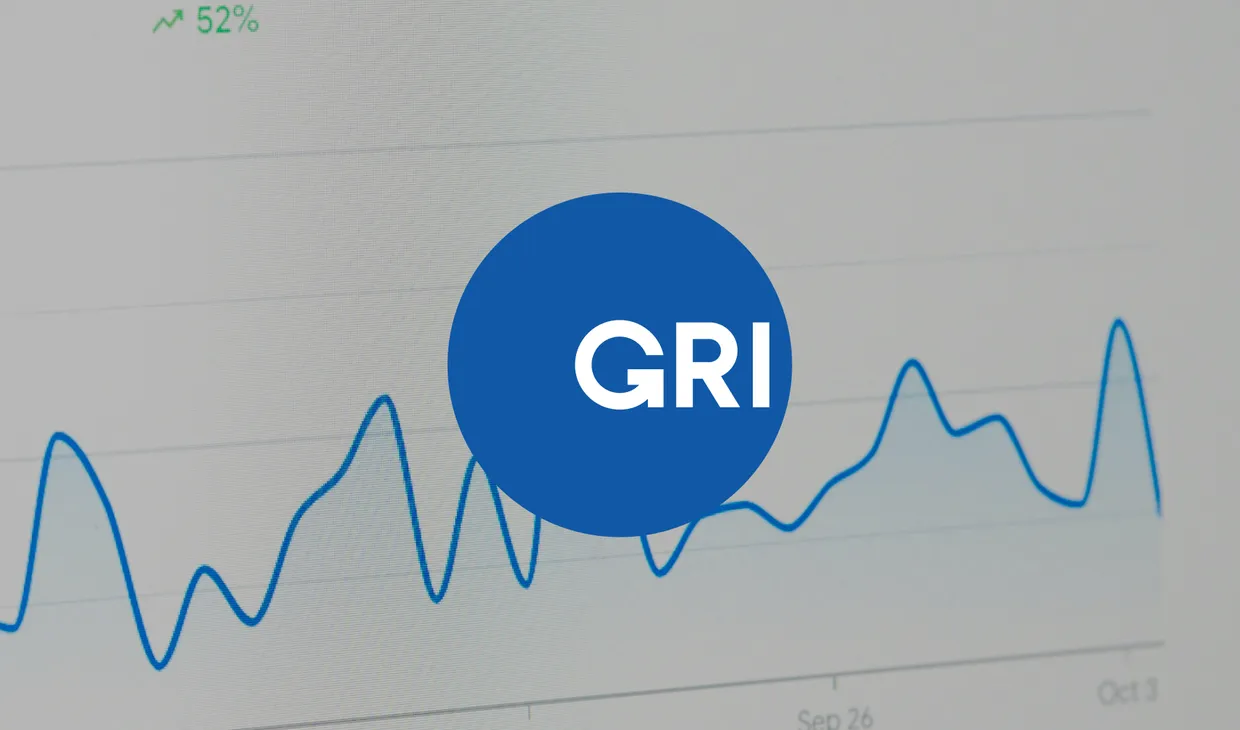The GRI framework: A quick recap
The Global Reporting Initiative (GRI) Standards are among the most widely used frameworks for sustainability reporting and aim to establish a common global language for ESG reporting. Developed by the Global Sustainability Standards Board (GSSB), GRI Standards enable companies to disclose their environmental, social and economic impacts in a consistent and comparable way.
The GRI framework is modular, consisting of three series:
- Universal Standards: Core, general disclosures that apply to all organizations (e.g., governance, strategy, and stakeholder engagement)
- Topic Standards: Disclosures on specific topics like climate change, water, or biodiversity
- Sector Standards: Guidance tailored to sector-specific risks and impacts
GRI 102 and 103 are Topic Standards, providing in-depth guidance on how organizations should report on their climate and energy-related impacts.
What are the goals of the new Climate Change and Energy Standards?
The newly released GRI 102 and GRI 103 Standards were developed to refine rigorous sustainability reporting practices and address stakeholder needs. These new sustainability reporting requirements aim to bring clarity, rigour, and comparability to climate and energy reporting.
These standards reflect the latest best practices in climate and energy reporting, responding to a surge in demand from stakeholders for more meaningful disclosure on how businesses are contributing to, and being affected by, climate change.
GRI 102: Climate Change
GRI 102 focuses on how companies impact the climate and how they manage those impacts, requiring companies to disclose their management approaches to climate impacts. It includes requirements to disclose:
- Scope 1, 2, and 3 GHG emissions (aligned with the GHG Protocol)
- Climate transition and adaptation plans, including associated policies and actions
- Targets for GHG reduction and progress against those targets
- Use of carbon credits and GHG removals, including assumptions and methodologies
- Social impacts of transition plans, especially for workers, local communities, and Indigenous Peoples
- Identification and assessment of the most significant impacts related to climate change
- Assessing material topics and significant impacts as part of the reporting process
A major innovation in GRI 102 is the inclusion of “just transition” considerations, bringing human rights and social equity into climate-related reporting.
GRI 103: Energy
GRI 103 addresses how organizations consume and generate energy and what steps they are taking to decarbonize. Disclosures include:
- Total energy consumption (renewable and non-renewable)
- Energy consumption intensity and reduction efforts
- Energy generation and use in upstream and downstream value chains
- Energy-related targets and progress toward decarbonization
- Energy efficiency initiatives and metrics implemented by the organization
- Impacts of energy policies on people and the environment, including occupational health considerations related to energy use and generation
- Waste management practices as they relate to energy-related environmental impacts
Together, these standards provide a holistic picture of an organization’s climate performance and energy impact, including waste management and occupational health aspects.
How do the new GRI standards align with the ISSB standards?
One of the most significant developments in the release of Global Reporting Initiative 102 and 103 is their deliberate alignment with other global frameworks, particularly the IFRS Foundation’s ISSB S2: Climate-related Disclosures. This alignment is especially beneficial for business, public companies, and multinational organizations that must meet diverse regulatory requirements across different regions. Other organizations, such as NGOs and industry groups, also benefit from the interoperability of these standards, as it facilitates collaboration and comparability in sustainability reporting. The alignment brings benefits such as increased efficiency and reduced reporting burden for all stakeholders involved.
Key points of alignment:
- GHG emissions: GRI 102 accepts equivalent disclosures from IFRS S2 for Scope 1, 2, and 3 emissions, provided they follow the GHG Protocol, which facilitates GRI reporting for organizations.
- Transition plans: Both standards require disclosure of climate transition strategies, policies, and metrics.
- Adaptation: Both address how organizations are responding to climate risks and building resilience.
- Just transition: GRI adds depth in social impact reporting, which complements ISSB’s investor-focused risk disclosures.
- Reporting criteria: Both standards provide clear reporting criteria for climate and energy disclosures, ensuring consistency and comparability.
This interoperability allows companies to reduce duplication and streamline their reporting processes, making it easier to meet both stakeholder and regulatory expectations. Organizations can use various tools and receive support to help them comply with both GRI and ISSB standards, enhancing transparency and accountability in sustainability disclosures.
What should businesses do to prepare?
If your organization reports using the Global Reporting Initiative, or plans to start, here are steps you should take to get ready for GRI 102 and 103. The company should take a leading role in preparing and implementing these standards, ensuring that staff receive appropriate training on the new requirements. It is also crucial to have access to reliable data and secure systems to support effective and transparent reporting.
1. Assess current readiness
- Review existing GRI reports, assessing current climate and energy reporting practices to identify gaps and areas for improvement
- Evaluate your ability to report Scope 3 emissions, transition plans, and energy intensity
2. Update your data systems
- Ensure emissions data is calculated in accordance with the GHG Protocol, and ensure access to accurate and comprehensive emissions and energy data
- Expand data collection to include social impacts, energy use across the value chain, and carbon credit assumptions
3. Align with transition planning
- Start building or refining your climate transition plan, including targets, timeframes, and mitigation measures, ensuring these are aligned with your organization’s broader sustainability goals
- Include adaptation considerations and impacts on affected communities
4. Build cross-functional teams
- Coordinate across sustainability, finance, HR, operations, and legal, involving management from each department to ensure a complete view of climate impacts
- Engage internal and external stakeholders to ensure disclosures are accurate and material
- Use GRI’s guidance documents and participate in pilot programs if possible to lead by staying informed about the latest developments in sustainability reporting
- Follow developments from the ISSB, EFRAG, and other bodies to maintain consistency across standards
How can ESG software help?
With new data points and higher expectations for transparency, ESG reporting is becoming more complex. ESG software platforms can significantly ease the burden of preparing reports under GRI 102 and 103 by helping organizations collect, manage, and disclose high-quality sustainability information.
By streamlining data collection and reporting processes, ESG software not only improves efficiency but also supports organizations in meeting global sustainability reporting frameworks. Effective use of ESG software can unlock positive change and drive positive change in sustainability performance.
Streamlining data collection
- Automatically gather and standardize emissions, energy, and social impact data from across your organization and supply chain
- Protect data privacy and ensure transparency for customers and other stakeholders
Ensuring consistency and accuracy
- Use built-in calculation engines aligned with the GHG Protocol and other standards
- Automatically check compliance with reporting criteria set by GRI and other sustainability standards
- Eliminate manual data entry errors
Supporting alignment with multiple frameworks
- Map disclosures across GRI, ISSB, CSRD, and other standards to reduce duplication
- Especially valuable for multinational organizations that need to map disclosures across different regulatory environments and ensure standardized, comparable sustainability reporting.
Enhancing transparency
- Provide audit-ready, traceable records for all reported metrics, including documentation of anti-corruption measures as part of compliance and corporate integrity initiatives
- Allow stakeholders to drill down into assumptions, methodologies, and data sources
Improving decision-making
- Visualize progress toward climate targets and identify gaps in transition or adaptation plans
- Enable scenario analysis and planning to create sustainable value and support long-term organizational goals
As sustainability reporting moves from voluntary to essential, technology will play a key role in helping organizations meet rising expectations efficiently and effectively.
The Global Reporting Initiative’s new Climate Change and Energy Standards mark a significant evolution in global sustainability reporting. By focusing on both environmental and human impacts, and aligning with leading international frameworks, GRI 102 and 103 will help companies disclose with clarity, build trust, and accelerate meaningful climate action.


